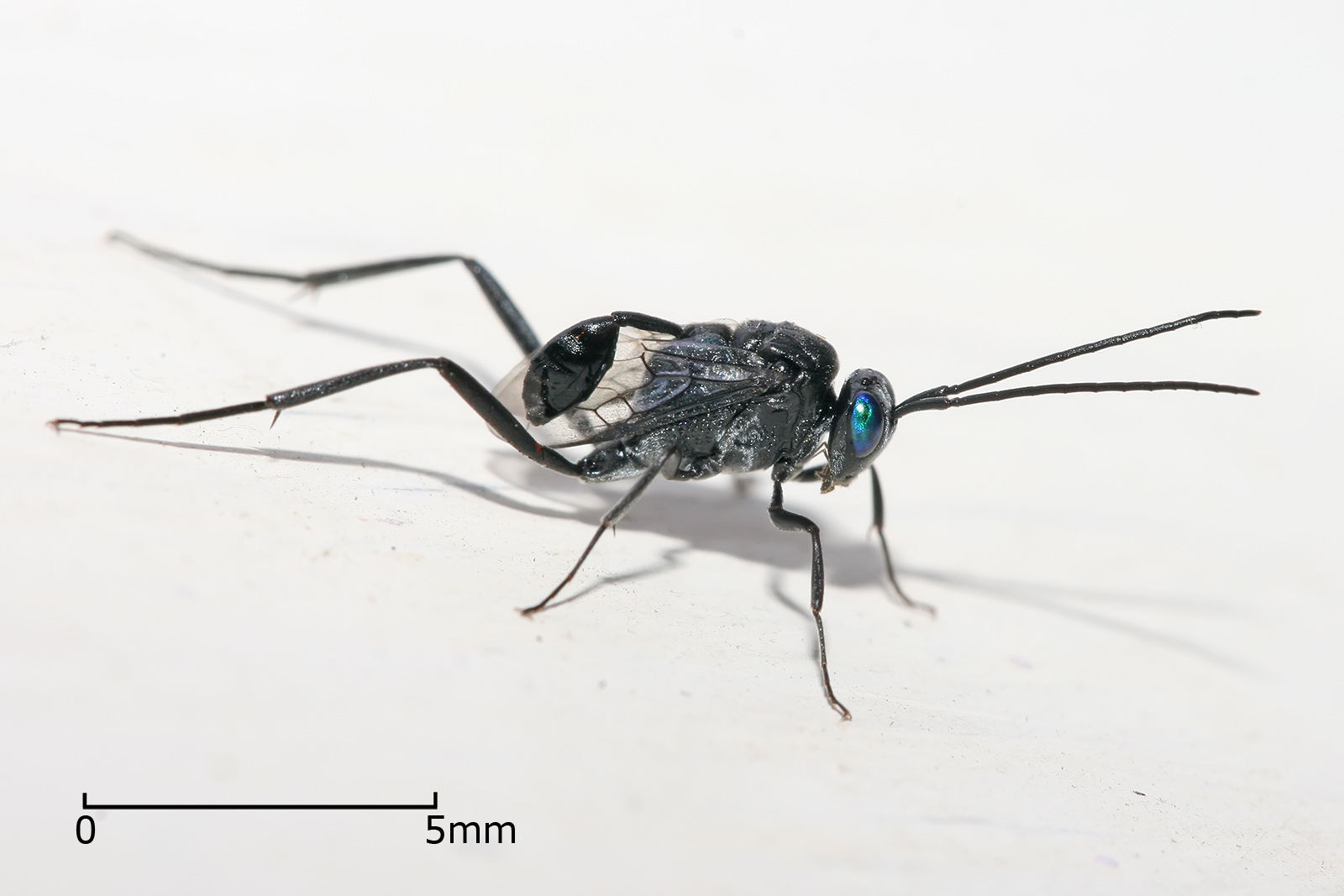 |
| [1] |
Symbiont Description:
 |
| [2] |
A member of phylum Arthropoda, Class Insecta, Order Hymenoptera, Superfamily, and Family Evaniidae, Evania appendigaster grow up to a size of 3/4 of an inch. Development takes 40 days for completion and they live as adults for about 15 days. Most people's first encounter with the ensign wasp is accompanied by a fear of being either bitten or stung. In actuality, they pose no danger to humans at all. Instead they serve as a benefit, due to their adept ability to control the cockroach population. The larvae that the ensign wasp lays within the cockroach oothecae grow and consume all of the eggs inside, before pupating and using the oothecae to develop. The female contacts the ootheca by drumming it with her antennae. She then extends her ovipositor to find the right spot to drill. Then she drills inside by moving her abdomen up and down and deposits the eggs inside, withdraws, and leaves. Evania appendigaster nor any of the other species of Evaniidae require a vector or intermediate host. [2]
Host Description:
 |
| [3] |
Life Cycle:
An adult Evania appendigaster will lay eggs either after or not. Those that were produced without mating will develop into males. Those produced after mating will produce both males and females. The larvae are deposited into the Periplaneta americana oothecae and after 40 days they emerge as fully reproducing adults and the cycle repeats itself. [1]
Ecology:
The parasitism of Periplaneta americana by Evania appendigaster helps control the level infestation that could occur. P. americana is capable of spreading numbers diseases and microorganisms with their presence. Approximately 22 species of human transferable diseases, fungi, helminths, etc. have been isolated from specimen found in the field. [4] Through the control of their levels, hopefully a control of the spread of pathogens via their contact can be avoided.
An Example of Open Compatibility and Encounter Filters:
As Periplaneta americana have spread to inhabit most of the world, so has Evania appendigaster. It overcame geographic separation to stay near its preferential host. By following so closely, Evania appendigaster has been able to keep its encounter filter open, as well as not to allow Periplaneta americana to alter itself to inhibit the compatibility filter between the two.
References:
Pictures:
- Deans, Andrew R. "Evaniidae." Tree of Life Web Project. N.p., 2006. Web. 10 Feb. 2012. <http://tolweb.org/Evaniidae/23533/2008.06.09>.
- Chin-Chang, Yeh, Huang Chi-Chang, and Lin Cheng-Shing. "Prior Experience Affects the Behavior in Evania appendigaster (L.) (Hymenoptera: Evaniidae)." Chinese Journal of Entomology 20(2000): 13-21. Chinese Journal of Entomology. Web. 10 Feb. 2012. <http://140.112.100.38/chinese/publication/journal/pdf/c2001/c200103.pdf>.
- Merritt, Thomas M. "Chapter 39: Fastest Runner." Book of Insect Records. University of Florida, 31 July 1999. Web. 10 Feb. 2012. <http://entomology.ifas.ufl.edu/walker/ufbir/chapters/chapter_39.shtml>.
- Barbara, Kathryn A. "American Cockroach." Featured Creatures. University of Florida Institute of Food and Agricultural Sciences, Aug. 2008. Web. 10 Feb. 2012. <http://entomology.ifas.ufl.edu/creatures/urban/roaches/american_cockroach.htm#management>.
Pictures:
- http://upload.wikimedia.org/wikipedia/commons/0/04/Evania_appendigaster.jpg
- http://entnemdept.ufl.edu/creatures/urban/roaches/ensign_wasp03.jpg
- http://upload.wikimedia.org/wikipedia/commons/3/3b/American-cockroach.jpg
Nice to meet,
ReplyDeleteit's really good about cockroaches and very informal for people.
here i have written an article about cockroach killer read now
best cockroach killer thanks
WEBSITE1
ReplyDeleteWEBSITE2
WEBSITE3
WEBSITE4
WEBSITE5